
Fundamentals
The very notion of “Digital Ethnography” often sounds like a stark departure from the whispered traditions of our foremothers, those wise hands that meticulously coiffed crowns under the sun’s gaze or by the soft glow of lamplight. Yet, in truth, it represents a remarkable extension of those very practices, adapting to the shifting sands of our shared human experience. At its foundational core, digital ethnography stands as a method of studying human culture and communal expressions as they unfold within the vast, intricate expanse of online environments. It is a scholarly lens that helps us observe, interpret, and come to a deeper understanding of the collective behaviors, shared customs, and systems of meaning that emerge and develop in digital spaces.
This inquiry delves into how individuals gather, converse, and create their cultural realities across networks, often through shared stories, images, and digital interactions. The essence of this discipline lies in observing and engaging with digital interactions, content, and the unique social behaviors that flourish across platforms like social media, digital forums, and virtual meeting grounds.
We might think of it as a scholarly journey into the digital hearth, where the stories and traditions of our hair, once passed down through touch and oral histories, now find new expressions and connections. This scholarly pursuit is akin to listening intently to the murmurs of a new village, one built not of mud and thatch, but of pixels and shared bandwidth, where the echoes of ancient practices still resonate. It provides a means to grasp the cultural fabric woven in virtual realms, helping us to discern how meaning is constructed and relationships are formed within these contemporary settings.
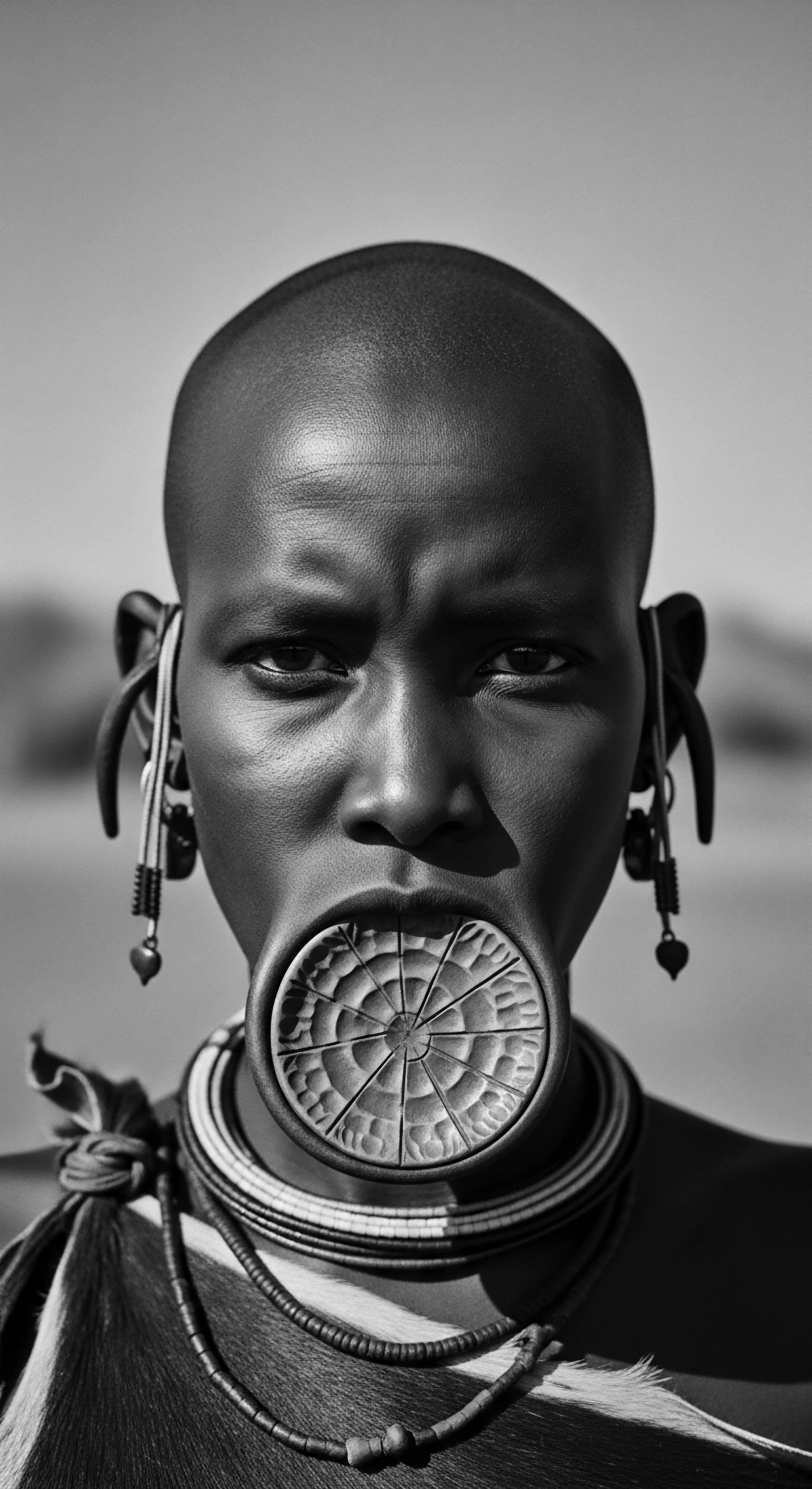
Unearthing Ancestral Threads in Digital Realms
Consider the simple act of braiding, an ancestral practice steeped in history and communal bonding. For generations, the art of hairstyling in African communities was a profound social ritual, a time for sharing wisdom, stories, and nurturing touch. These ancient practices were not merely about adornment; they were about lineage, status, identity, and intricate forms of communication. The patterns woven into hair could convey marital status, age, community ties, and even coded messages for freedom seekers on perilous journeys.
Now, as our lives extend into the digital sphere, these traditions find new ground. The very spirit of communal gathering, a hallmark of traditional hair care, translates into online spaces where individuals share tutorials, seek advice, and celebrate their hair journeys. A 2017 study, for example, observed that nearly 99 percent of respondents in a survey about online natural hair communities affirmed wearing their natural hair is healthy, and 98 percent agreed natural hair looks attractive on Black women. These figures speak to a profound shift in collective self-perception, a re-rooting in ancestral beauty standards that is significantly supported by digital connections.
Digital Ethnography allows us to perceive the enduring spirit of ancestral hair practices manifesting in new digital gathering spaces.
The digital landscape, therefore, becomes a living archive, a place where the tender thread of hair heritage is continually spun and re-spun. It is a space where the wisdom of ancient hair care rituals, once confined to specific geographical locations or family circles, now finds a global audience. This extension offers a profound opportunity for individuals to connect with their ancestral roots, discover techniques passed down through generations, and share personal experiences that affirm collective identity.
The definition of digital ethnography, in this context, is not merely about observing online interactions. It is about understanding the deeper Meaning, the cultural Significance, and the historical Connotation behind those interactions, particularly as they relate to textured hair. It is about recognizing how platforms become modern-day communal spaces, much like the shade trees or living rooms where hair care rituals traditionally took place. This understanding provides a framework for comprehending how digital tools become conduits for preserving and evolving cultural practices.
- Oral Tradition Transformed ❉ Online discussions and video tutorials echo the wisdom passed down through generations, providing practical hair care techniques.
- Community Formation ❉ Digital platforms foster virtual ‘sisterhoods’ and ‘brotherhoods’ where individuals with shared hair textures and cultural experiences find support and belonging.
- Identity Affirmation ❉ Sharing personal hair journeys and celebrating diverse natural styles online directly contributes to a collective affirmation of Black and mixed-race beauty standards, challenging historical narratives of perceived inferiority.

Intermediate
Moving deeper into the scholarly pursuit, Digital Ethnography extends beyond a straightforward observation of online life; it proposes a method of deep immersion within digital environments to comprehend the lived experiences and cultural expressions of those who inhabit these spaces. The discipline recognizes that the internet is not simply a tool, but a vibrant arena where new forms of social interaction and cultural expression are forged. It involves adapting established ethnographic techniques – such as participant observation and in-depth interviews – to the distinct characteristics of the digital realm. Researchers delve into virtual forums, social media channels, and online communities to gather insights into the distinctive customs, lexicons, and social norms that emerge within these virtual cultures.
The very concept of a “field site” undergoes a transformation in digital ethnography. It shifts from a physical location to a constellation of online interactions, where the dynamics of human connection are expressed through text, images, videos, and shared experiences. This investigative approach enables a thorough understanding of how individuals and groups construct personal narratives and collective identities within these new digital landscapes. It asks how the digital medium influences the very way we relate to one another and to our own heritage.

The Tender Thread ❉ Cultivating Hair Wellness in Digital Gardens
The Black and mixed-race natural hair movement stands as a profound illustration of Digital Ethnography’s power. It began as a grassroots effort, often propelled by individuals seeking knowledge and support outside of mainstream beauty narratives that historically neglected or even devalued textured hair. The internet became a fertile ground for this reawakening, offering a sanctuary for sharing wisdom.
Consider the phenomenon of YouTube as a repository of ancestral hair wisdom. For many Black women, particularly a generation perhaps not taught to care for their natural hair from an early age, online platforms provided an invaluable resource. Videos featuring wash day routines, styling tutorials, product reviews, and personal hair journeys became digital apprenticeships, mirroring the hands-on learning that occurred within family units or community salons of old. This access to information about textured hair care, once fragmented or inaccessible for some, became democratized.
The prevalence of these platforms shows a growing self-definition and resistance. One study found that 95 percent of respondents indicated wearing their hair naturally made them feel good, and 92 percent liked the way their natural hair looks. These statistics paint a picture of profound personal transformation, a direct consequence of the shared knowledge and affirmation found within these digital spaces.
The collective wisdom found in online hair communities nourishes individual journeys toward self-acceptance and reverence for ancestral hair.
Digital ethnography in this context becomes a way to analyze not just what is being said, but how it is being said, and the collective spirit driving these conversations. It examines the emergence of specific terminologies, care rituals, and even aesthetic preferences that define these online communities. The shared language, for instance, of “Transitioning” (moving from chemically straightened to natural hair), “Wash Day” (a comprehensive hair care ritual), or “Protective Styles” (hairstyles that minimize manipulation and shield hair from environmental damage), forms a lexicon understood by members, symbolizing a collective commitment to hair health and heritage.
This approach goes beyond mere observation, seeking to grasp the underlying cultural Significance and the personal Meaning attached to these digital interactions. It asks how online engagement impacts self-esteem, racial pride, and the very perception of beauty within diasporic communities. The focus expands to comprehend how these virtual spaces become vital sites of support, resistance, and the forging of new collective identities.
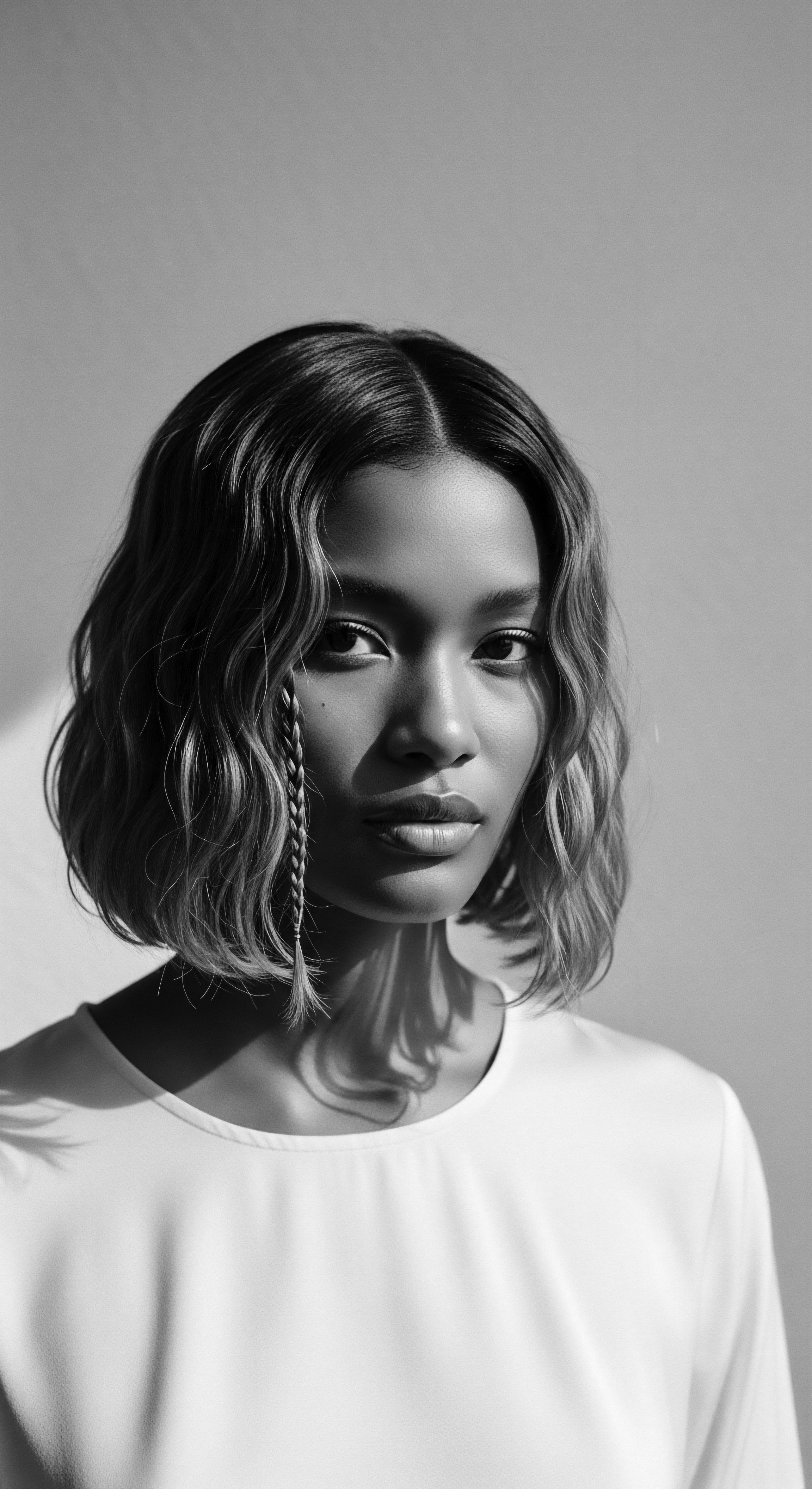
Methods of Digital Ethnography in Hair Research
Digital ethnographers interested in textured hair communities employ a range of methods adapted for online environments. These techniques aim to provide a rich, nuanced understanding of cultural practices as they unfold in digital spaces.
- Online Participant Observation ❉ This involves researchers immersing themselves in online communities, observing discussions, interactions, and content. It can range from passive lurking to active engagement, much like traditional fieldwork. For instance, a researcher might join Facebook groups dedicated to loc care, watching how members share tips, celebrate milestones, and address challenges.
- Analysis of Digital Artifacts ❉ This method entails examining user-generated content such as YouTube videos, Instagram posts, blog entries, and forum discussions. The visual rhetoric of shared images and videos, alongside textual comments, offers deep insights into beauty standards, care routines, and cultural expressions. The content, including the styles presented and the accompanying narratives, provides a rich source of data on prevailing trends and shared experiences.
- Virtual Interviews ❉ Conducting interviews via video calls, direct messages, or email allows researchers to gather qualitative data directly from individuals within these digital communities. These conversations can reveal personal motivations, experiences of discrimination, and the intimate meaning individuals ascribe to their hair journey. Ensuring consent and privacy in these virtual interactions is a critical ethical consideration.
- Netnography ❉ A specific form of digital ethnography, netnography focuses on analyzing consumer behavior and cultural phenomena in online communities. It is particularly useful for studying how products are discussed, recommended, and integrated into hair care practices within online groups.
These methods, when applied with cultural sensitivity, allow researchers to uncover how digital spaces serve as conduits for cultural preservation, resistance, and the collective redefinition of beauty standards within Black and mixed-race hair experiences.
| Aspect of Hair Care Knowledge Transfer |
| Ancestral/Traditional Practice Oral histories, direct demonstration within family or community circles. |
| Digital Ethnography's Role in Modern Practice YouTube tutorials, blog posts, social media discussions, virtual forums providing visual and textual instruction. |
| Aspect of Hair Care Community Bonding |
| Ancestral/Traditional Practice Communal braiding sessions, salon gatherings, familial grooming rituals. |
| Digital Ethnography's Role in Modern Practice Online 'sisterhoods' and forums, live stream Q&As, shared personal hair journeys on platforms. |
| Aspect of Hair Care Product Information |
| Ancestral/Traditional Practice Passed-down recipes, knowledge of local herbs, natural ingredients. |
| Digital Ethnography's Role in Modern Practice Crowdsourced product reviews, ingredient analysis discussions, DIY recipes shared globally via videos and blogs. |
| Aspect of Hair Care Identity Affirmation |
| Ancestral/Traditional Practice Generational hairstyles, community acceptance of specific styles as markers of belonging. |
| Digital Ethnography's Role in Modern Practice Global visibility of diverse textured hair, challenges to Eurocentric beauty norms, collective celebration of natural aesthetics. |
| Aspect of Hair Care This table illustrates the profound transformation of hair care knowledge and community, where digital spaces extend ancestral wisdom and foster global connection around textured hair. |

Academic
The academic delineation of Digital Ethnography signifies a sophisticated scholarly approach to understanding the complex interplay between human culture and digital environments. It moves beyond the simplistic conceptualization of online spaces as merely tools, recognizing them as integral, dynamic realms where social life unfolds, identities are negotiated, and cultural practices are enacted. At its core, digital ethnography constitutes a research methodology rooted in the long-standing tradition of ethnographic inquiry, yet meticulously adapted to address the distinctive characteristics of technologically mediated interactions. It signifies a profound intellectual commitment to comprehending how digital infrastructures, affordances, and practices are embedded within broader social realities, influencing human behavior and meaning-making in ways that are often opaque to conventional observational methods.
This approach does not merely analyze textual data; it interprets the intricate ways in which digital spaces profoundly reshape identity, communication, and social structures in contemporary society. The Meaning derived from digital ethnographic studies extends to illuminating the transformation of communication practices across digital platforms, the creation and evolution of virtual identities and relationships, and the demonstrable impact of online communities on real-world social dynamics. It calls for researchers to be acutely mindful of the fluidity of online boundaries, the nuances of digital literacy, and the imperative of maintaining stringent ethical standards within virtual environments, a critical dimension often requiring flexible, contextual interpretations rather than rigid adherence to traditional guidelines.

The Unbound Helix ❉ Voicing Identity and Shaping Futures Through Digital Ethnography
In the academic sphere, Digital Ethnography’s application to textured hair heritage provides a compelling case study of its methodological rigor and cultural impact. The historical marginalization of Black and mixed-race hair textures, often deemed unprofessional or undesirable within Eurocentric beauty standards, has deeply influenced self-perception and social acceptance. The digital realm, however, has become a formidable counter-narrative space, enabling what can be termed a “second wave” of the natural hair movement. This movement is not solely about aesthetics; it is a profound act of self-reclamation, a political statement, and a collective affirmation of identity.
Scholars employing digital ethnography in this context examine the profound shifts in discourse surrounding Black hair. They analyze how online communities—through platforms like YouTube, Instagram, and specialized blogs—have generated spaces for education, support, and collective identity construction that were historically unavailable through traditional media. The study by Haaruun and Watson (2017) provides empirical weight to this argument, highlighting that the natural hair online community functions as a “beauty counterculture and virtual support system,” demonstrating how increased access to images of Black women with natural hair, coupled with self-identification with those images, can positively influence perceptions of beauty and self-esteem within the African Diaspora.
This research, conducted through qualitative analysis of 140 YouTube videos and over 5000 comments, reveals the quantifiable shifts in self-perception and racial pride directly linked to digital engagement. The statistical finding that 95 percent of respondents reported feeling good about wearing their hair natural, and 92 percent liked its appearance, directly speaks to the empowering influence of these digital spaces on individual and collective psyche.
Digital Ethnography reveals how online spaces serve as profound catalysts for re-defining beauty standards and fostering collective self-acceptance within textured hair communities.
A particularly insightful area of academic inquiry involves the concept of “style-shifting” in digital communication, drawing parallels to linguistic theories. Just as linguists H. Samy Alim and Geneva Smitherman (2012) explored how Barack Obama masterfully navigated between “White mainstream ways of speaking” and “Black culture’s modes of discourse” to connect with diverse audiences, digital ethnographers observe similar fluid identity performances within online hair communities. Users, in their posts, comments, and video creations, consciously or subconsciously “style-shift” their language and visual presentation.
They might adopt a more academic tone when discussing hair science, a celebratory tone when sharing personal successes, or a deeply empathetic tone when offering support. This linguistic and visual dexterity, analyzed through a digital ethnographic lens, underscores the complex layers of identity that Black and mixed-race individuals express and negotiate within online spaces related to their hair. It provides a robust framework for comprehending the sociolinguistic dimensions of online cultural practice.
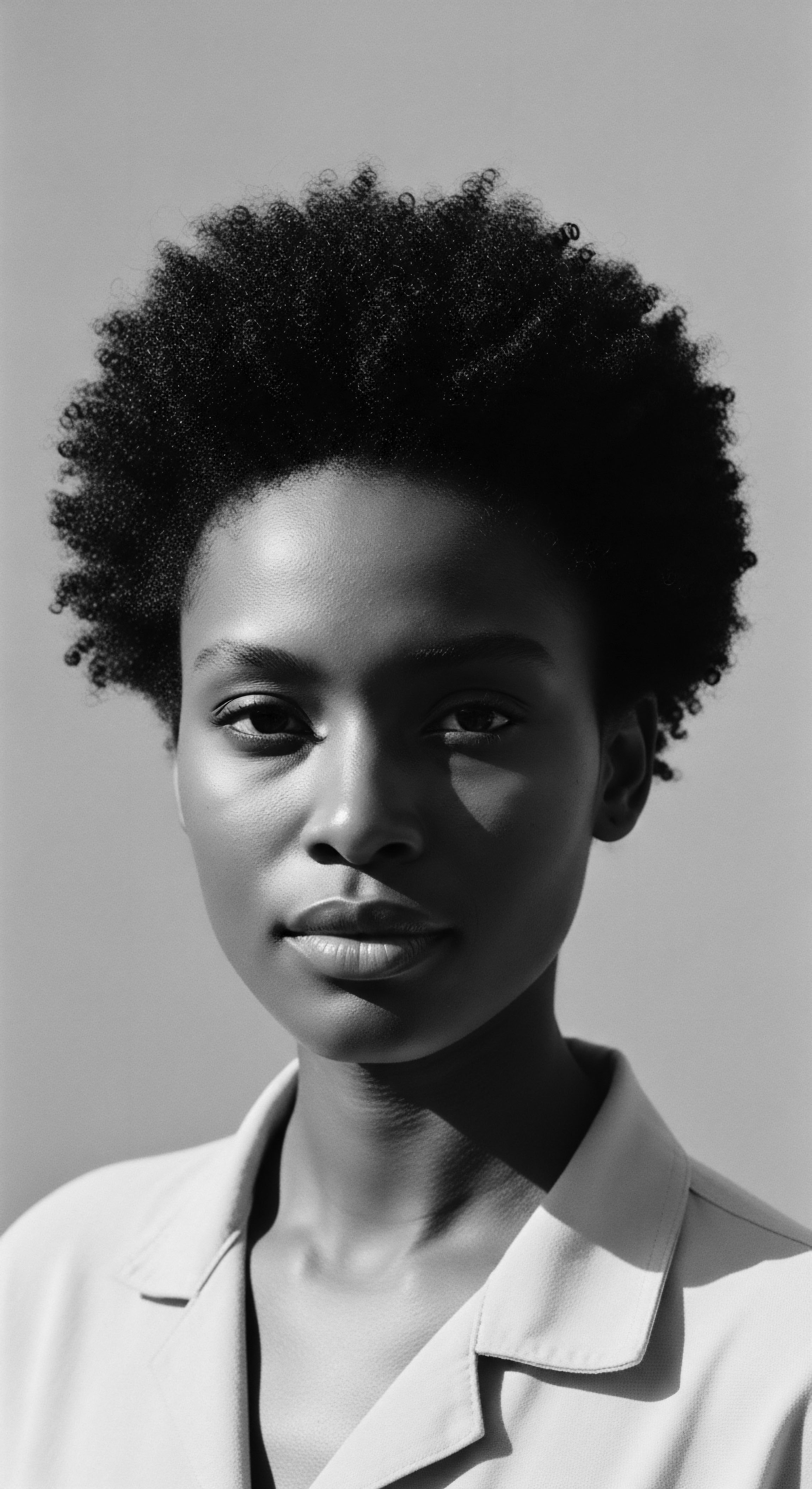
Ethical Responsibilities in Digital Ethnography of Hair Heritage
The nuanced study of Black and mixed-race hair experiences in digital environments necessitates a careful consideration of ethical responsibilities. The very intimate nature of hair, its deep ties to identity, racial politics, and personal history, means researchers must approach these communities with heightened sensitivity. Academic discourse on digital ethnography often points to the Association of Internet Researchers (AoIR) guidelines as a standard for ethical practice, emphasizing ethical pluralism, informed consent, and privacy.
Key considerations for researchers in this domain include:
- Defining Public Versus Private ❉ What is considered public in an online forum may not be perceived as such by individuals who post their content. Researchers must be diligent in assessing how participants themselves define public and private spaces, especially when dealing with personal narratives about hair discrimination or wellness journeys. The boundaries are far more ambiguous than in traditional fieldwork.
- Informed Consent in Virtual Spaces ❉ Obtaining informed consent can be particularly challenging when the “field” is dispersed and interactions are often asynchronous. How does one ensure understanding and agreement when individuals may be anonymous or semi-anonymous, or when interactions are fleeting? A thoughtful approach involves clearly communicating the research purpose, data collection methods, and intended use, often through embedded notices or direct messaging where feasible.
- Data Representation and Anonymity ❉ How data is recorded, reconstructed, and conveyed has significant implications for how individuals and groups are understood. Protecting the anonymity of participants, particularly when sharing personal stories or images related to sensitive topics like hair struggles or self-esteem, becomes paramount. This may involve de-identifying data in ways that preserve the integrity of the narrative while safeguarding individual privacy.
- Researcher Transparency and Reflexivity ❉ Digital ethnographers must be transparent about their presence and purpose within online communities. Furthermore, self-reflexivity—the continuous examination of the researcher’s own biases, positionality, and influence on the research—is crucial. Understanding how one’s own experiences or perspectives might shape interpretations of Black hair heritage, for instance, is vital for maintaining scholarly integrity.
The ethical conduct of digital ethnography, particularly within culturally specific domains like textured hair communities, is not a static set of rules. It is, instead, an ongoing process of mindful adaptation and critical reflection, recognizing the profound trust placed in the researcher by those whose stories are being documented.
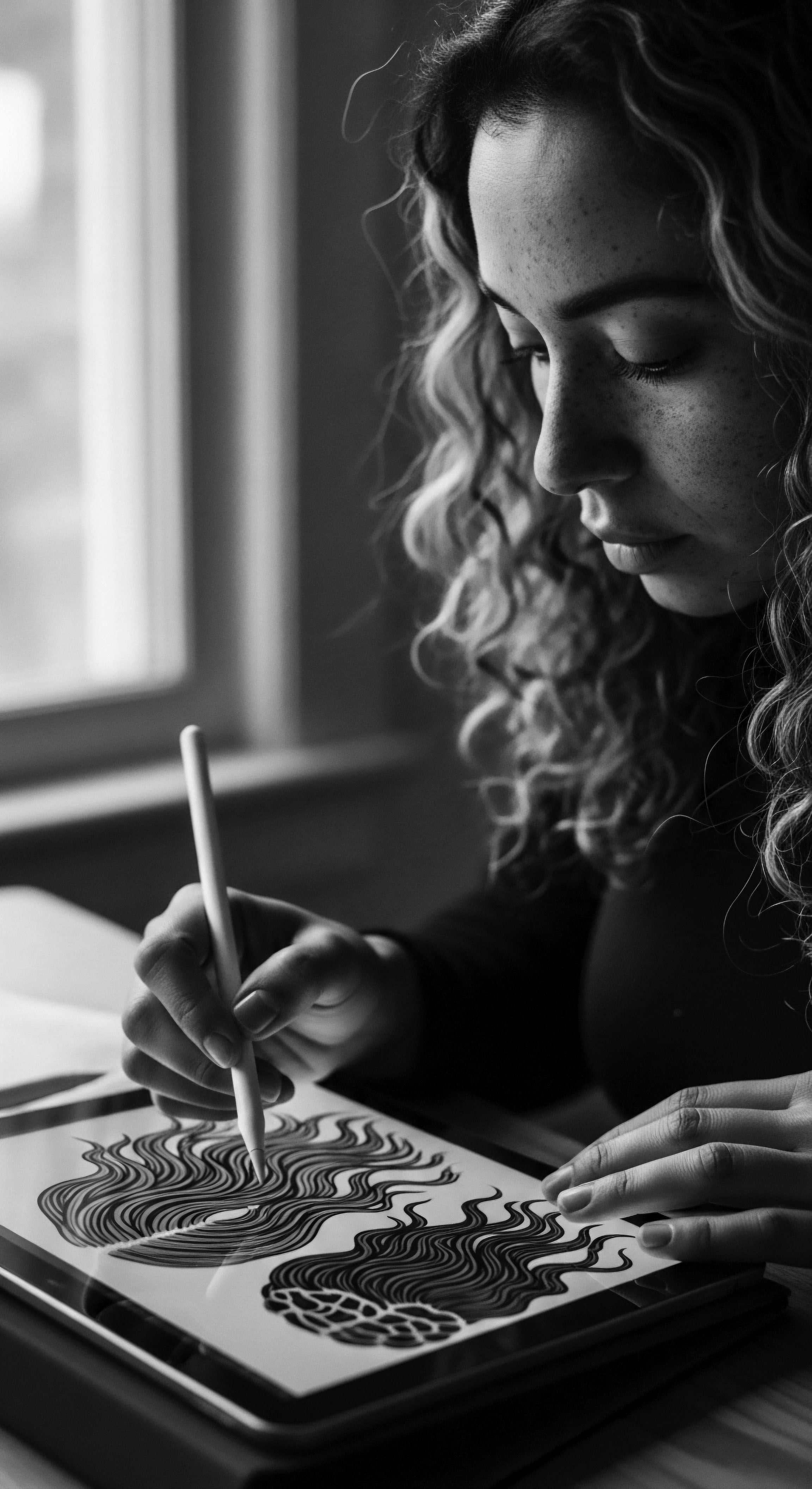
The Interconnectedness of the Digital and the Ancestral
The rigorous academic pursuit of Digital Ethnography, when applied to the rich history of textured hair, highlights an unbroken chain of human experience. It underscores that the fundamental human need for connection, for communal learning, and for identity affirmation transcends the medium through which it is expressed. The ancient wisdom of hair care, the communal rituals of grooming, and the profound Significance of hair as a marker of identity and resistance, all find contemporary echoes in the digital realm.
Digital ethnography offers an intellectual framework for discerning the enduring patterns of cultural exchange, social support, and personal evolution that characterize the textured hair journey. It enables scholars to examine the ways in which online spaces function as virtual extensions of traditional gatherings—barbershops, salons, family homes—where knowledge is exchanged and cultural solidarity is forged. The rigorous methodologies provide concrete means to understand not just the ‘what’ of online interactions, but the ‘why,’ grounding digital phenomena in historical context and lived experience.
| Traditional Cultural Practice Communal Grooming & Storytelling |
| Digital Manifestation & Ethnographic Insight Online forums and YouTube channels serving as virtual communal spaces for sharing hair care techniques and personal narratives. Digital ethnography observes how shared videos and comments create new forms of collective identity. |
| Traditional Cultural Practice Hair as Identity Marker & Resistance |
| Digital Manifestation & Ethnographic Insight Social media showcasing diverse natural hairstyles as acts of self-affirmation and challenging Eurocentric beauty standards. Ethnographic analysis unpacks the visual rhetoric and collective movements for natural hair acceptance. |
| Traditional Cultural Practice Transmission of Ancestral Knowledge |
| Digital Manifestation & Ethnographic Insight Digital archives of traditional remedies, ingredients, and styling techniques, often cross-referenced with modern scientific understanding. Researchers study how this intergenerational knowledge is preserved and adapted online. |
| Traditional Cultural Practice Economic & Entrepreneurial Ecosystems |
| Digital Manifestation & Ethnographic Insight The rise of Black-owned hair care brands and content creators leveraging digital platforms for marketing and community building. Digital ethnography examines the economic implications and cultural impact of these digital ventures. |
| Traditional Cultural Practice This table illustrates the profound continuity and adaptation of textured hair cultural practices within the digital age, offering fertile ground for digital ethnographic inquiry. |
The scope of digital ethnography is not confined to the superficial. It provides a means to explore the deeper currents of self-love, collective affirmation, and cultural pride that flow through online communities dedicated to textured hair. The scholarship emerging from this field contributes significantly to our comprehension of how marginalized identities find voice, support, and pathways to empowerment in the digital sphere, shaping both individual destinies and the broader cultural landscape. It is a testament to the resilience of heritage, finding new pathways to expression even in the most contemporary of mediums.

Reflection on the Heritage of Digital Ethnography
As we draw our thoughts together on the expansive terrain of Digital Ethnography, particularly as it illuminates the intricate world of textured hair, we find ourselves standing at a compelling nexus. It is a space where the echoes of ancient practices and ancestral wisdom meet the boundless possibilities of digital connection. The journey through the various meanings and applications of digital ethnography reveals its profound capacity to not merely record, but to also honor and extend the living, breathing archives of Black and mixed-race hair heritage.
The very concept of hair, from its elemental biology—the complex curl patterns that resist and embrace moisture, the delicate balance of scalp wellness—to its grand historical pronouncements as a symbol of defiance, beauty, and identity, finds new avenues for expression and preservation through digital mediums. Digital ethnography, in this light, transforms into a sacred conduit, a modern-day griot telling stories across continents and generations. It reminds us that care is a continuous act, a tender thread passed from hand to hand, even when those hands are hundreds of miles apart, connected by a screen.
The digital realms are not cold, detached spaces. They are vibrant hearths where individuals gather, share, and cultivate their understanding of hair that has been both celebrated and scrutinized throughout history. The forums, video logs, and social media platforms become communal braiding circles, barbershop confidantes, and family gatherings where the nuances of a twist-out, the strength of a loc, or the softness of a coil are discussed with shared purpose and deep empathy. This collective sharing, nurtured by digital tools, is a testament to the enduring power of community, fostering self-acceptance and a reverence for hair in all its forms.
The profound impact of digital ethnography lies in its ability to capture the intimate transformations occurring on individual and collective levels. It allows us to observe how a young person, having perhaps grown up with messages of hair inadequacy, discovers a vast network of support online. There, they find the practical guidance to nurture their natural texture, alongside a liberating affirmation of their inherent beauty.
This revelation is not a small thing; it is a re-rooting, a reclaiming of a heritage that was, for too long, suppressed. The digital space becomes a site of healing, a place where ancestral knowledge, once threatened by erasure, is powerfully re-seeded and allowed to flourish anew.
Digital Ethnography is a testament to heritage’s resilience, finding new pathways for expression and preservation in our interconnected world.
The journey of textured hair—from the deep past, where hair was an intricate social map and spiritual symbol, to the present day, where it stands as a banner of pride and political statement—is a journey mirrored in the evolution of human connection. Digital ethnography stands as a vital tool in this continuum, offering a respectful, comprehensive, and deeply humane way of comprehending this rich heritage. It invites us to consider how our digital footsteps leave lasting imprints, not just in algorithms, but in the collective memory and ongoing legacy of our hair traditions. This scholarship becomes a form of profound care, preserving the stories of strands that carry within them the wisdom of ages, spiraling unbound into the future.
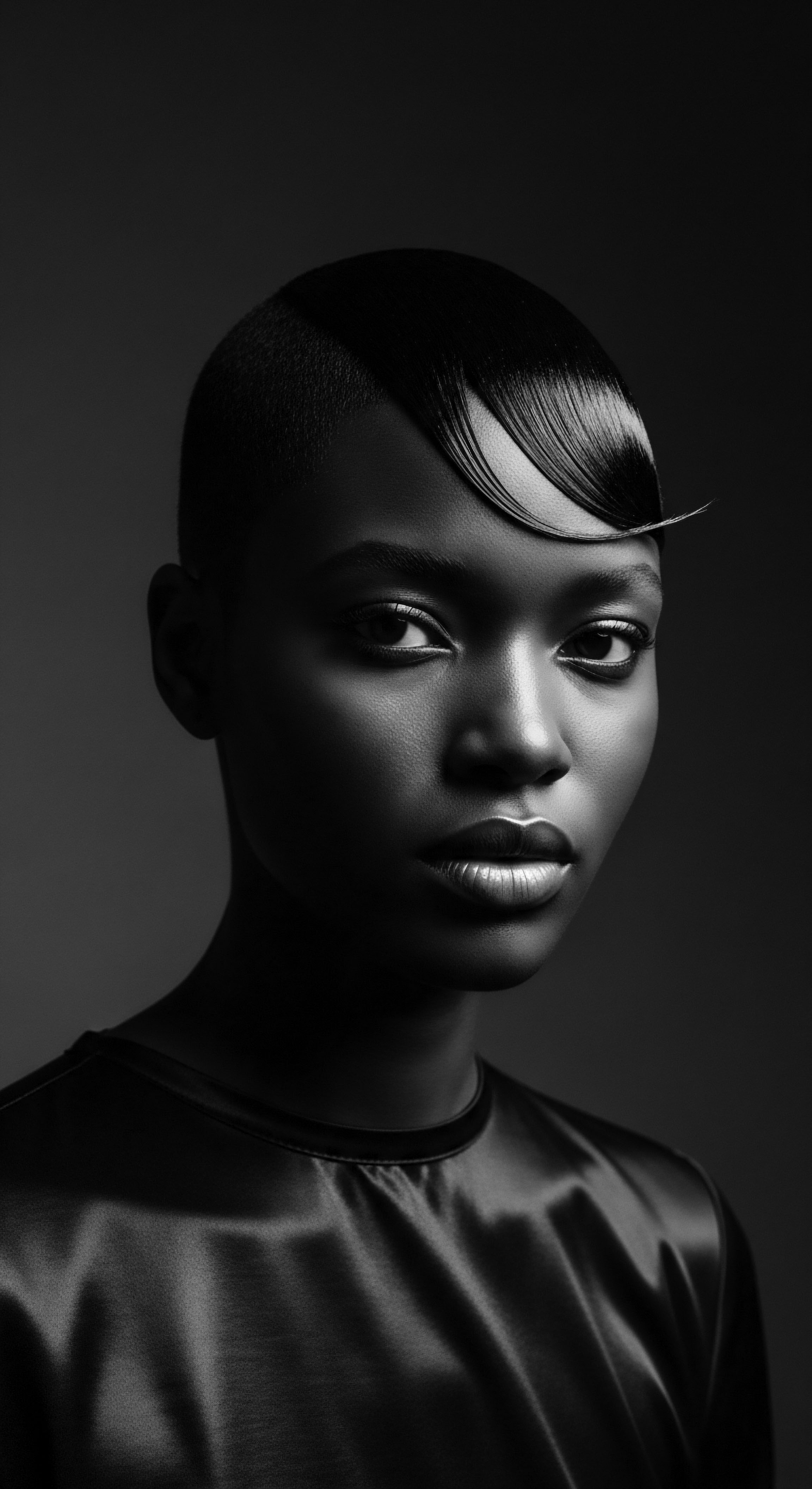
References
- Haaruun, Ayana, and Melodye Watson. 2017. Digital Beauty ❉ Screening Black Hair in Cyberspace. In Black Women in the Diaspora ❉ Interdisciplinary Perspectives, edited by Janice B. Asare and T. Denean Sharpley-Whiting, 107-126. Brill.
- Ramogase, Karabo. 2019. Embracing natural hair ❉ online spaces of self-definition, e-sisterhoods and resistance. Communicare ❉ South African Journal for Communication Theory and Research 38 (2) ❉ 20–39.
- Alim, H. Samy, and Geneva Smitherman. 2012. Articulate While Black ❉ Barack Obama, Language, and Race in the U.S. Oxford ❉ Oxford University Press.
- Markham, Annette N. 2003. Online Ethnography. In The Internet Handbook for Writers, Researchers, and Journalists, edited by Robert G. Hays, 45-66. Guilford Press.
- Pink, Sarah, Heather Horst, John Postill, Larissa Hjorth, Tania Lewis, and Jo Tacchi. 2016. Digital Ethnography ❉ Principles and Practice. Sage Publications.
- Boellstorff, Tom, Celia Pearce, Bonnie Nardi, and T. L. Taylor. 2012. Ethnography and Virtual Worlds ❉ A Handbook of Method. Princeton University Press.
- Thompson, Cheryl. 2009. Black women and identity ❉ Whats hair got to do with it? Michigan feminist studies 22 (1) ❉ 79–96.
- Thompson, Alex, et al. 2019. Ethical considerations and challenges for using digital ethnography to research vulnerable populations. Journal of Business Research 105 ❉ 418–429.
- Johnson, Sharmaine D. and Lori L. Tharps. 2014. Hair Story ❉ Untangling the Roots of Black Hair in America. St. Martin’s Press.
